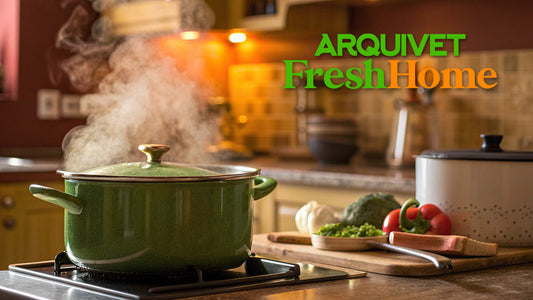
What is dog food made of?
Dog food comes in many types. We can find dry food, wet food, hypoallergenic food, natural food, and complementary food—food designed to meet specific nutritional goals. Each one fulfills a specific function and, generally, has a specific composition, depending on the manufacturer. In this article, we'll focus on common dog food, the most commonly sold in both specialty stores and supermarkets. We'll answer questions about what dog food contains, how dog food is made, and what the best dog food should be like. If you want to learn more about the ingredients in dog food, keep reading!
What's in dog food?
When answering what dog food contains or what are the ingredients in dog food, there is one thing we must be clear about, and that is that Dogs are carnivorous animals that need protein for your body to function perfectly, therefore, the proportion compared to the rest of the foods is higher, being the main ingredient. It is also important to clarify that some feeds, such as natural ones, lack chemical components and, in some cases, cereals - grain free—. However, the quality of feed depends not only on the ingredients used or the quantities, but also on the quality of the meat and other foods. The fresher and more natural the better.
Dog food: proteins
Proteins provide the amino acids that pets need. to be able to produce muscle fiber and for the body to function properlyThe protein used to make animal feed can be animal or vegetable. The nutritional value of animal proteins is higher, making them more suitable. Typically, these are extracted from chicken, lamb, pork, beef, or fish. Also keep in mind that depending on the type of protein, dog food You can find proteins that come from fresh meats, dehydrated meats, hydrolyzed meats, or animal protein flours.
Dog food: vegetables and cereals
The best dog foods also tend to contain a proportional amount of vegetables according to the needs of the pets. Although dogs are primarily fed meat, the nutrients in vegetables are also necessary for the body to function properly, especially because of the vitamins. These are useful for regulate intestinal flora, as well as strengthen digestive transitDog food also typically contains grains and natural fibers that perform the same function, in addition to providing a greater amount of nutrients. Generally, dog food contains corn, wheat, oats, soy, rice, and legumes.
Dog food: fats or lipids
When making dog food, fats and lipids are also added. These are designed to provide energy to the pet, but also because it supports the animal's cellular structure and helps strengthen and regenerate the skin and coat. An example of these lipids are omega-3 acids. In fact, we can find fats and lipids of plant origin, such as soybean, sunflower, or corn oils; or animal fats, which are extracted from the skin of cows, pigs, or chickens.
Dog food: minerals and vitamins
Minerals and vitamins are essential for our little one's body, which is why food contains them. Vitamins are the main function of activate the body's energy. These help to strengthen metabolism, and also influence different biological processes such as reproduction, growth or brain functions. Minerals, on the other hand, serve to strengthen the immune system, to oxygenate the body and strengthen the cardiovascular system. Keep in mind that the amounts of minerals should be smaller compared to vitamins, since high doses are not recommended for the digestive system. The amounts of ingredients in dog food, therefore, should be proportional to our little one's needs.
Dog food: additive components
The best feeds usually do not use chemicals, although all pre-made foods have additive components because They provide flavor and guarantee the durability of the productAdditives can also be natural, as is the case with flavorings and colorings derived from cereals, vegetables, and greens. Examples include turmeric, beets, celery, and spinach. However, we can also find additive components in the form of trace elements—made from natural oils to provide the dog with energy—chemical additives, and zootechnical additives—chemically processed.
How dog food is made
The process of making dog food involves mixing the dry and wet ingredients to form a dough. This is followed by a extrusion process whereby the dough is heated under pressure and then pushed through a die that cuts the feed as it expands due to changing pressure. The feed—or kibble—is then dried and cooled, then spray-coated—with a mix of ingredients to enhance the flavor and preservatives to prevent spoilage. Another process used to make feed is by bakingLikewise, it should be noted that many of the by-products used to make dry dog food are first processed into flour. To do this, they are cooked to remove the fat and dry out the remaining material.
What is ash in feed?
Ash in animal feed, or raw feed ash—as it appears on many labels—refers to proteins in the form of animal meal, as we mentioned above. These are produced by subjecting meat to high temperatures until it is reduced to ash. However, they have a lower nutritional value than other animal proteins.


